
TARGET 150513
Highline Transfer
Between Two Ships
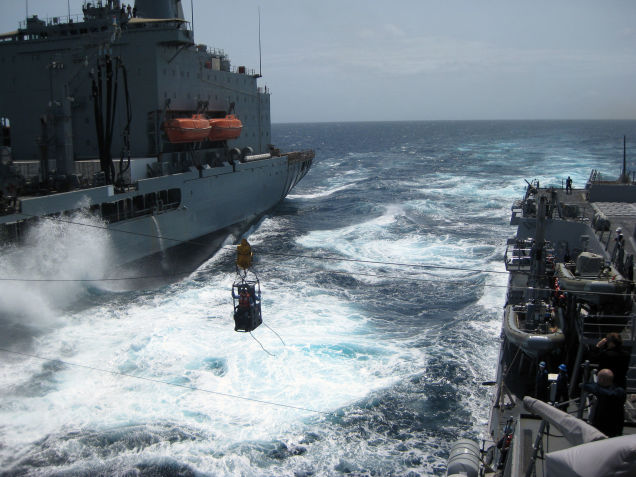
When you have to get a person from one big ship to another, and a helicopter is not available, you get the ride of your life in a steel chair attached to a wire that gets winched over the churning ocean. The 'high-line personnel transfer' has been around for over a century. During smooth seas it can be a scary but fun ride, but in rough seas it can be downright horrifying.
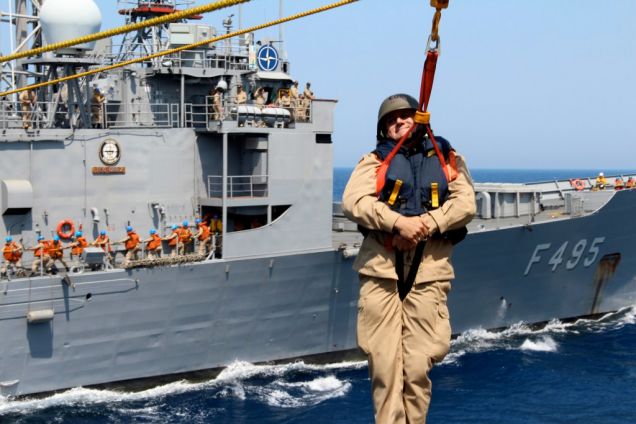
Its roots can be traced back to the 'Breeches Buoy' method of moving sailors from sea to shore, which is still trained for by the U.S. Coast Guard today. But with many of America's surface combatants and logistics ships having helicopters at their disposal (vertical replenishment), the high-line personnel transfer between ships is not as common as it once was, but it still does happen.
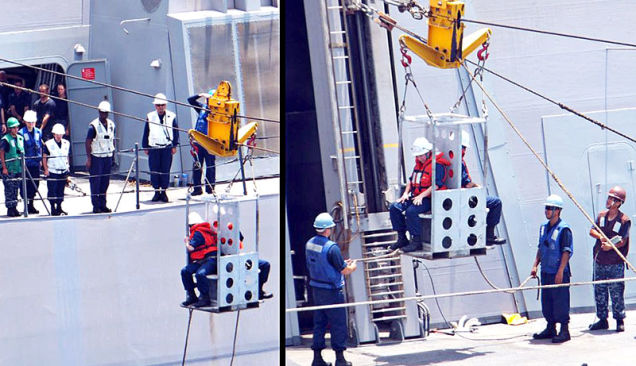
When using the high-line personnel transfer, a person (or people in some cases) that needs to be moved from one vessel to another do so during underway replenishment. This is an affair that's regular but also somewhat dangerous, with two huge ships moving together in tight formation at a matched speed and heading. The suction produced from the two vessels cutting through the water in close proximity attempts to pull the ships together and rough seas, like everything else, make the maneuver much more challenging.
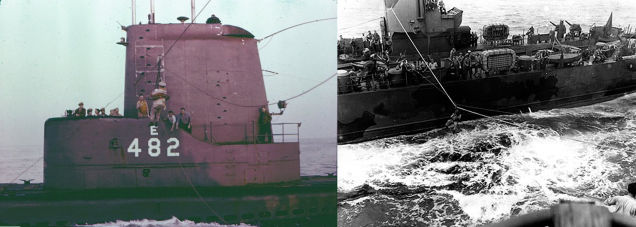
Fuel, stores, even bombs are transferred via large hoses, pallets and containers, all with pulleys attached to high-lines. The usual tool that is used to move people along the lines in this unique manner is a particular variant of a Boatswain's Chair - something akin to a hybrid between a tiny mining elevator car and a amusement ride contraption. It is basically a steel cage with a seat in it and a hook on the top. Some of the newer models can e ven take more than one person at a time.
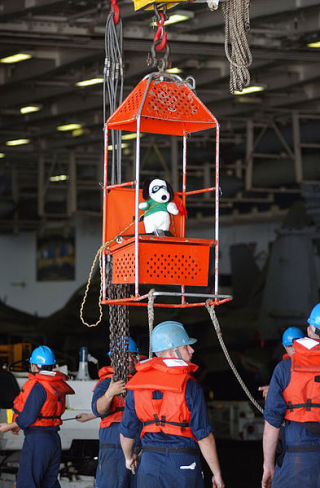
Once strapped into the Boatswain's Chair, and wearing a helmet and a life jacket, because, you know, stuff happens, the occupant is winched across the chasm between the two speeding ships, with the sea frothing violently below and some big props turning a few hundred feet back. During rough seas the Boatswain's Chair can snap about violently from left to right and vertically. Even waves can swamp it during especially high sea states.
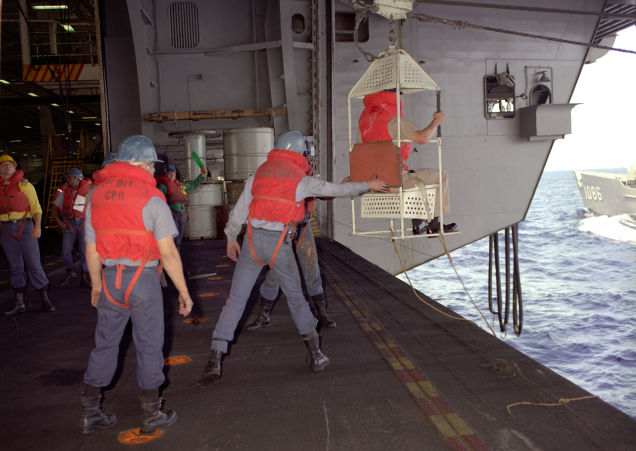
Although the whole idea of a high-line personnel transfer is scary enough as it is, some other nations don't use a Boatswain's Chair at all, they just use a collar like those used to winch downed pilots aboard helicopters. This setup was also used by the U.S. Navy for years as well when transferring personnel in between smaller ships. This method leaves the poor soul totally at the mercy of the wave movements below with nothing to brace themselves against the wild motions but the harness itself. Because this method was used by smaller ships, that sat lower over the waterline, during rough seas a rider could get smashed by waves and even dunked mercilessly into the sea.
Because of the 'thrill ride' nature of the whole affair, today high-line transfers can be used as rites of passage for sailors and officers. It's seen during change of command ceremonies or for a reenlistment or promotion celebration, for example. It's still just for fun, and these rides can be cancelled due to harsh conditions, something that was not an option decades ago.
So next time you groan about having to sit in traffic with "crazy drivers," just think of the poor sailor that had to be transferred between two ships during monsoon and combat conditions in the Pacific during World War II. If the waves didn't get you, then a navigational error or a Japanese submarine or air raid could ruin your commute without warning.
If you got impressions for which this feedback is insufficient, more information, pictures and videos can be found at the following web sites:
Wikipedia
USS Ticonderoga CVA-14 transferring personnel
At Sea Hi-line transfer
Underway replenishment
Many thanks to Ray McClure for creating this target.